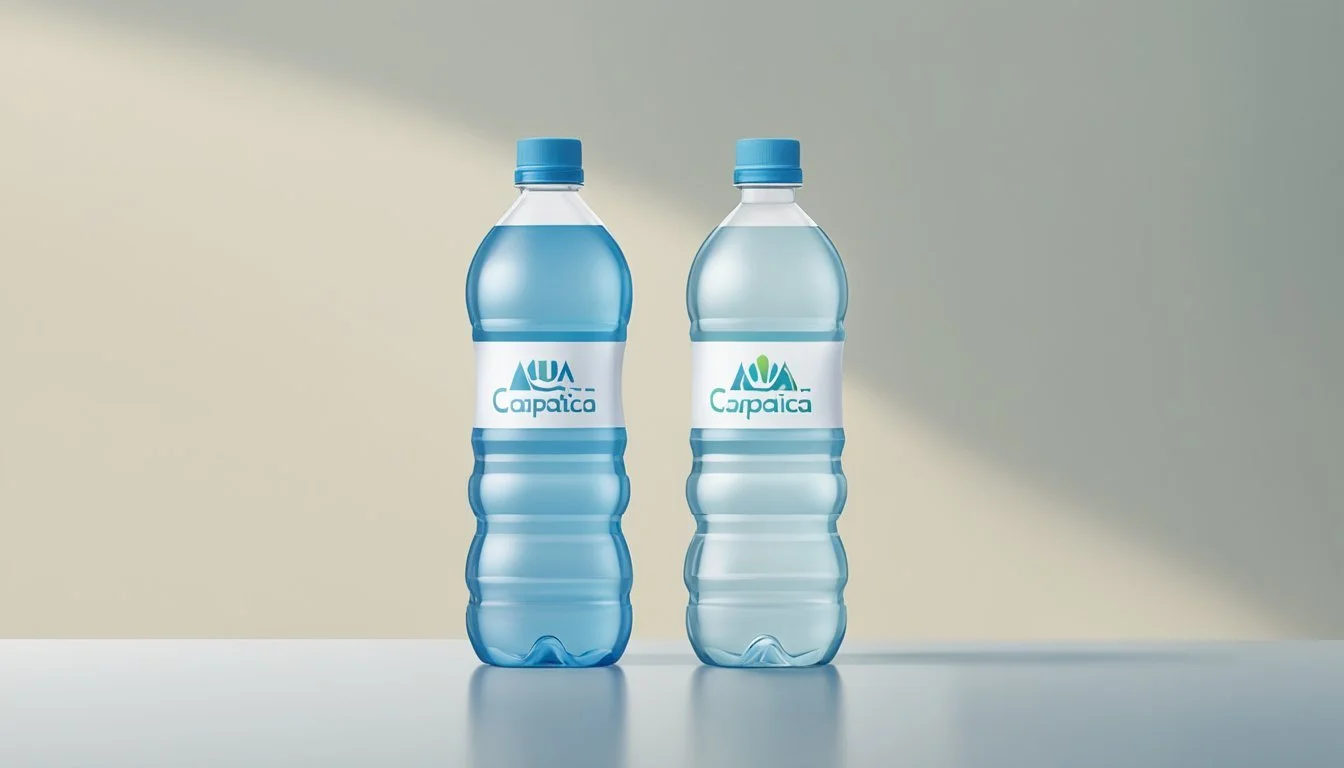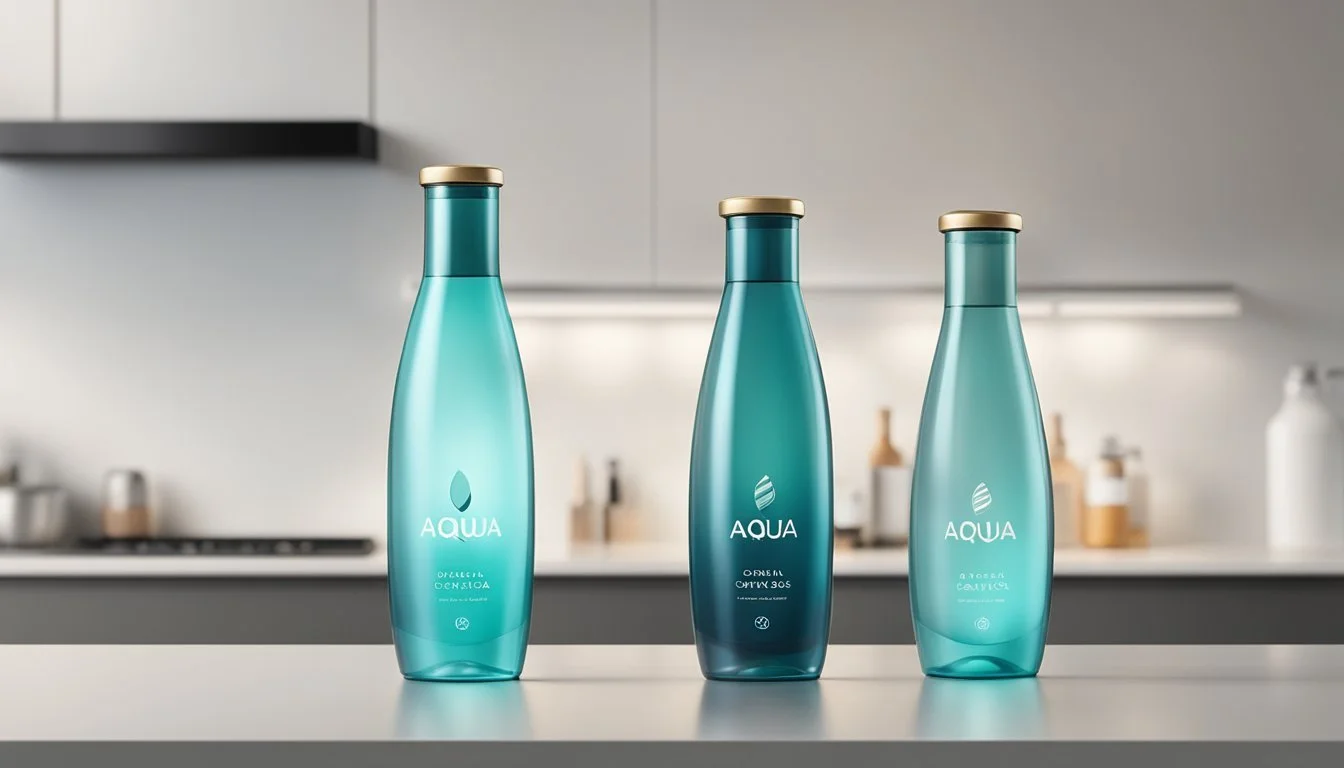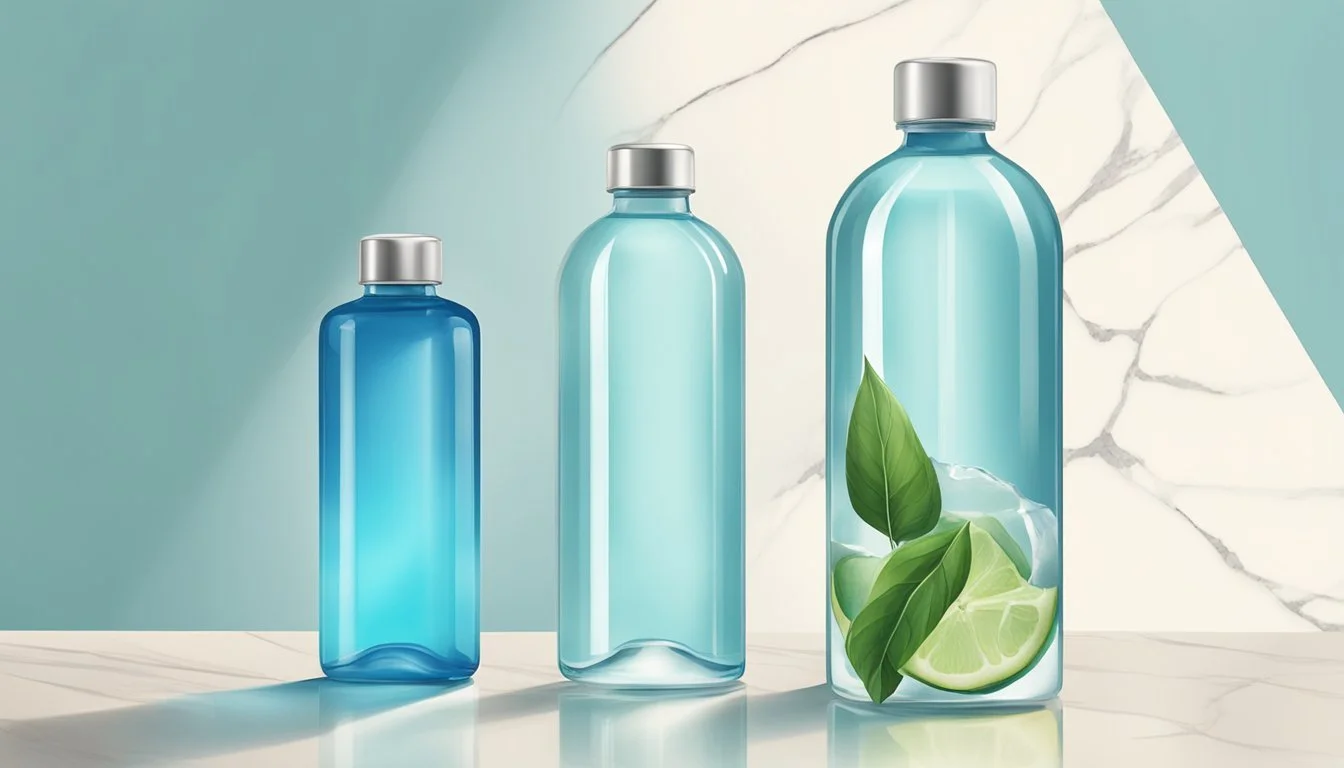Aqua Carpatica vs. Path: Which Bottled Water is Better?
A Comprehensive Comparison
When it comes to choosing the right bottled water, Aqua Carpatica and Path are often compared for their quality and purity. Aqua Carpatica boasts naturally nitrate-free water with a low sodium level, positioning itself as a premium choice for health-conscious consumers. On the other hand, Path offers a sustainable approach with its reusable bottles, making it an attractive option for those concerned about environmental impact.
Taste and packaging also play crucial roles in determining the best bottled water. Aqua Carpatica is often praised for its fresh and pure taste, which appeals to those who prefer a clean and crisp water experience. Path's unique selling point lies in its reusable, durable bottles, which not only reduce plastic waste but also provide a reliable and stylish way to stay hydrated on the go.
Ultimately, the decision between Aqua Carpatica and Path may come down to personal preferences and priorities. For those seeking purity in their water, Aqua Carpatica offers a nitrate-free, low sodium option, while Path appeals to eco-conscious consumers with its focus on sustainability and reusability.
Unveiling Aqua Carpatica and Path
Aqua Carpatica originates from the pristine springs of the Carpathian Mountains in Romania. Known for its natural mineral water, it is celebrated for being nitrate-free and boasts a low sodium level.
Source: Carpathian Mountains, Romania
Type: Natural Mineral Water
Highlights: Nitrate-free, low sodium
In contrast, Path stands out in the bottled water market with its focus on sustainability. Path's water is sourced from natural springs and is marketed in a reusable, eco-friendly aluminum bottle.
Source: Natural Springs
Type: Spring Water
Highlights: Eco-friendly packaging, sustainability focus
While both brands emphasize purity and quality, they cater to slightly different consumer needs. Aqua Carpatica emphasizes the purity of its natural mineral composition, making it appealing to those seeking clean and safe hydration.
Meanwhile, Path targets environmentally-conscious consumers who prioritize minimizing plastic waste through reusable containers.
Though they differ in several aspects, both Aqua Carpatica and Path offer high-quality bottled water options that cater to different preferences and lifestyle choices. Whether focusing on mineral benefits or environmental impact, these brands provide distinct yet commendable choices in the bottled water industry.
Origin and Source
Aqua Carpatica and Path Water both stand out for their unique origins and sources, which play a crucial role in the quality and purity of the water they offer. Understanding these differences helps consumers make informed choices.
Carpathian Springs: The Source of Aqua Carpatica
Aqua Carpatica is sourced from the Carpathian Mountains in Romania. This pristine region is known for its natural beauty and rich ecosystem. The water undergoes natural filtration as it journeys through the underground springs, taking approximately 14 years to reach the surface.
Located deep within wild forests, far from human activity, the spring ensures a high level of purity. Advanced eco-friendly technology is used to harvest the water, maintaining its natural integrity. The result is naturally nitrate-free water with low sodium levels, making it a popular choice for health-conscious consumers.
The Roots of Path Water
Path Water is committed to sustainability from the point of origin to the packaging. Unlike other brands that source water from remote natural springs, Path Water focuses on purified municipal sources. This choice promotes environmental sustainability, reducing the need for extensive transportation and preserving natural water reserves.
Path Water uses a rigorous purification process to ensure the water is free of contaminants. The water is filtered through multiple stages to achieve a crisp and clean taste. Additionally, they emphasize the use of reusable aluminum bottles, furthering their mission of reducing plastic waste and encouraging responsible consumption.
Physical and Chemical Composition
When comparing Aqua Carpatica and Path bottled waters, the physical and chemical composition is crucial for understanding their benefits and distinctions. Key factors include the types and amounts of minerals, electrolyte content, and the presence of any undesirable substances.
Understanding Mineral Content
Aqua Carpatica prides itself on its unique mineral composition. It offers a natural still mineral water profile that is nitrate-free and features a low sodium level. This makes it an appealing choice for those looking to reduce sodium intake while maintaining essential electrolytes.
The brand advertises a balanced presence of calcium and magnesium, important for bone health and muscle function, respectively. Aqua Carpatica also maintains high standards concerning the absence of harmful nitrates and chemicals, ensuring purity and safety.
In contrast, Path water might not have the specific low sodium and nitrate-free focus. It appeals to a different demographic with its alkaline water variant, offering a slightly higher pH level that proponents believe can help neutralize acid in the body and improve hydration.
When choosing between these two, consumers should consider their specific health needs and preferences for mineral content and purity. Aqua Carpatica's commitment to being naturally nitrate-free and having a low sodium level might be more suitable for individuals keen on those attributes.
Health and Hydration
When evaluating Aqua Carpatica and Path bottled water options, it’s essential to understand their impact on health and hydration. This section will focus on how each option benefits hydration, targets specific groups like pregnant women and children, and supports athletes.
Benefits of Mineral Water for Hydration
Mineral water like Aqua Carpatica offers unique health benefits. Rich in essential minerals such as magnesium and calcium, it supports bodily functions. Consuming mineral water aids in maintaining electrolyte balance, which is crucial for effective hydration.
Path water, known for its sustainability, also hydrates effectively. However, it lacks the mineral content that Aqua Carpatica provides. Thus, Aqua Carpatica may be advantageous for those seeking added health benefits alongside hydration.
Comparison Table:
Aspect Aqua Carpatica Path Bottled Water Mineral Content High (e.g., Magnesium, Calcium) Low Health Benefits Supports electrolytes and bone health Primarily hydration-focused Sustainability Eco-friendly glass bottle Reusable aluminum bottle
Targeted Hydration: Pregnant Women and Children
Pregnant women and young children have unique hydration needs. Aqua Carpatica’s mineral content aids in fetal development and maternal health. Pregnant women benefit from the water's nitrate-free quality and low sodium, which align with prenatal health guidelines.
For young children and babies, pure and clean hydration is crucial. Aqua Carpatica provides essential minerals while being gentle enough for their developing systems. Path water is safe but lacks the added nutritional benefits essential for these groups.
Athletes and Active Lifestyle Considerations
Athletes and individuals with an active lifestyle face higher hydration demands. Regular water might not provide enough electrolytes. Aqua Carpatica, rich in natural electrolytes like potassium and magnesium, ensures effective rehydration after intense physical activity.
Path water focuses on basic hydration but doesn’t offer the same level of mineral replenishment. For those engaging in strenuous activities, Aqua Carpatica’s composition supports muscular and cardiovascular functions more effectively, facilitating quicker recovery and sustained energy levels.
In summary, Aqua Carpatica offers distinct health and hydration benefits, particularly with its rich mineral content, making it suitable for targeted groups like pregnant women, children, and athletes. Path water is a good choice for general hydration needs but falls short in providing added nutritional benefits.
Taste Profile and Quality
The taste profiles and quality of Aqua Carpatica and Path Water differ significantly, offering unique characteristics that cater to diverse preferences. Below, the specific attributes of each brand are detailed.
Aqua Carpatica Taste Experience
Aqua Carpatica stands out for its crystal clear and odourless nature, providing a fresh and clean taste. Sourced from Carpathian Springs in Romania, this still mineral water boasts a notable purity, free from nitrates and with a low sodium level.
Described by many as refreshing, it leaves a smooth aftertaste, making it enjoyable for daily consumption. The water undergoes natural filtration, taking around 14 years before it is harvested close to the surface. It has been featured in reviews by Olive Magazine and Fine Water, which praise its superior quality.
Path Water Taste Analysis
Path Water is known for its emphasis on sustainability, packaged in reusable aluminum bottles. The taste is often described as clean and represents an everyday drinking water that is refreshing and pure.
Although not highlighted to the same extent as Aqua Carpatica in taste tests, Path Water offers a pleasant taste that appeals to those looking for an eco-friendly option. It embodies a standard taste profile, suitable for hydration without any distinct aftertaste.
In terms of quality, Path Water ensures that each sip is satisfying, focusing more on environmental impact than specific taste characteristics.
Environmental Impact
Aqua Carpatica and Path differ significantly in areas like packaging sustainability and carbon emissions. Understanding their environmental impacts helps consumers make informed choices.
Packaging and Sustainability
Aqua Carpatica typically uses glass bottles and plastic bottles. Glass is highly valued for being 100% recyclable and reusable, with fewer harmful contaminants compared to plastic. However, plastic bottles, even when recyclable, often end up in landfills or oceans, posing a threat to marine life and ecosystems.
Path stands out by using recyclable aluminum bottles. Aluminum is easy to recycle and can be reused indefinitely. This reduces waste significantly compared to traditional plastic. Although aluminum production consumes energy, its long-term recyclability makes it an environmentally friendly option compared to plastic.
Evaluating the Carbon Footprint
Aqua Carpatica's use of glass bottles implies a lower carbon footprint post-consumption, as they can be recycled multiple times. However, the energy used in bottling and transporting glass, which is heavier than plastic, contributes to higher initial emissions.
Path promotes eco-friendliness through its plastic-free packaging. The reusable and recyclable aluminum bottles significantly reduce CO2 emissions over time. Aluminum's lightweight nature compared to glass or plastic lowers transport emissions. Path's commitment to reducing single-use plastics further aligns with global efforts to minimize environmental degradation.
Addressing the considerable CO2 release in bottled water production, as highlighted in various studies, both brands show a clear preference for sustainable practices.
Market Availability and Consumer Accessibility
Aqua Carpatica and Path both have distinct market availability and accessibility, impacting consumer choices based on location and cost effectiveness.
Where to Buy Aqua Carpatica and Path
Aqua Carpatica is distributed widely in Europe, especially in the UK and Ireland. It can be found in premium outlets such as Harrods and Whole Foods Market. Additionally, it is stocked in mainstream supermarkets like Tesco and Ocado. In contrast, Path is more commonly found in the United States, often available in major chains such as Whole Foods Market, Target, and via Amazon. Independent grocery stores and online retailers also stock both brands, although availability may vary by region.
Comparing Cost and Value
Aqua Carpatica is often positioned in the premium price range due to its source and mineral content. Prices are generally higher, especially in high-end stores like Harrods. In contrast, Path markets itself as an eco-friendly and reusable alternative, which can reflect in a varied price range depending on the retailer and location.
Aqua Carpatica often commands higher prices due to its positioning in the premium segment and the transportation costs associated with its European source. Consumers might find Path more cost-effective, particularly in the U.S., where it could be priced lower than imported brands like Aqua Carpatica.
Brand Perspectives and Social Proof
Aqua Carpatica and Path are two bottled water brands with distinct characteristics and strong followings. Understanding what customers and experts think about these products can provide insights into their quality and appeal.
Customer Reviews and Awards
Aqua Carpatica has garnered positive feedback from health-conscious consumers who value its naturally nitrate-free status and low sodium level. Customers often mention its clean, crisp taste and its source from the Transylvanian mountains.
Path has also built a solid reputation, with customers appreciating its eco-friendly and reusable aluminum packaging. Many note the refreshing taste of this still natural mineral water.
Awards:
Aqua Carpatica: Recognized at several industry events for its purity and health benefits.
Path: Highlighted for innovation in sustainable packaging solutions.
Expert Endorsements and Recommendations
Health and wellness experts often praise Aqua Carpatica for its mineral-rich composition. Its low nitrate and sodium levels make it a preferred choice among dieticians.
Path's commitment to sustainability has not gone unnoticed. Environmentalists and advocates for eco-friendly products recommend Path for its reusable packaging, which reduces plastic waste significantly.
Other brands like Fiji, Evian, and San Pellegrino are often mentioned as benchmarks in discussions of premium bottled waters. While Aqua Carpatica is frequently compared to these brands for its mineral content, Path is likened to sustainable options like Flow for its packaging innovation.
Packaging and Design
Aqua Carpatica and Path both offer unique packaging and design elements that set them apart in the bottled water market.
Aqua Carpatica features a sleek, debossed bottle with distinct branding. The side panels include detailed engravings that add a touch of sophistication. The water is bottled at the Bajenaru Spring in Romania, adding a geographical allure.
Path, on the other hand, offers a minimalist, reusable aluminum bottle. This eco-friendly approach emphasizes sustainability, reducing plastic waste and promoting a circular economy.
Table Comparison:
Feature Aqua Carpatica Path Material Clear Plastic Aluminum Design Details Debossed side panels, branding Minimalist, smooth Sustainability Focus Not highlighted High (Reusable) Origin Story Bottled at source in Romania General refillable
Both brands prioritize aesthetics and environmental considerations. Aqua Carpatica's clear plastic bottle allows consumers to see the purity of the water. In contrast, Path's aluminum bottle is opaque, underscoring its reusable nature.
Each design caters to different tastes and values. Aqua Carpatica’s elegant design exudes premium quality, while Path’s functional design aligns with eco-conscious consumers.





